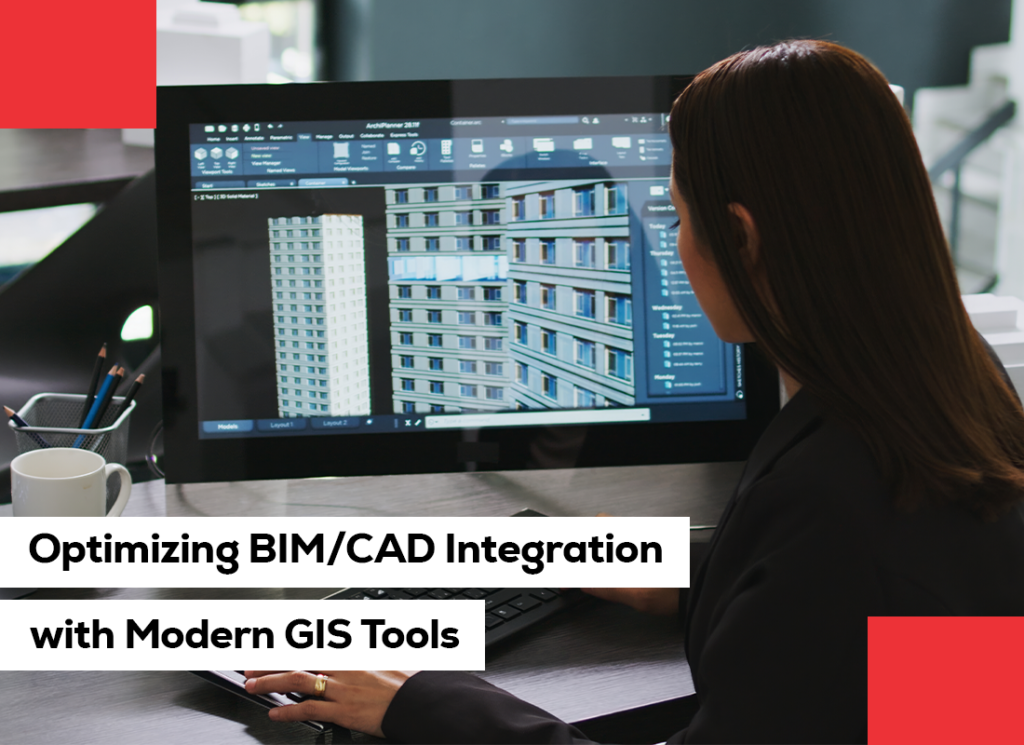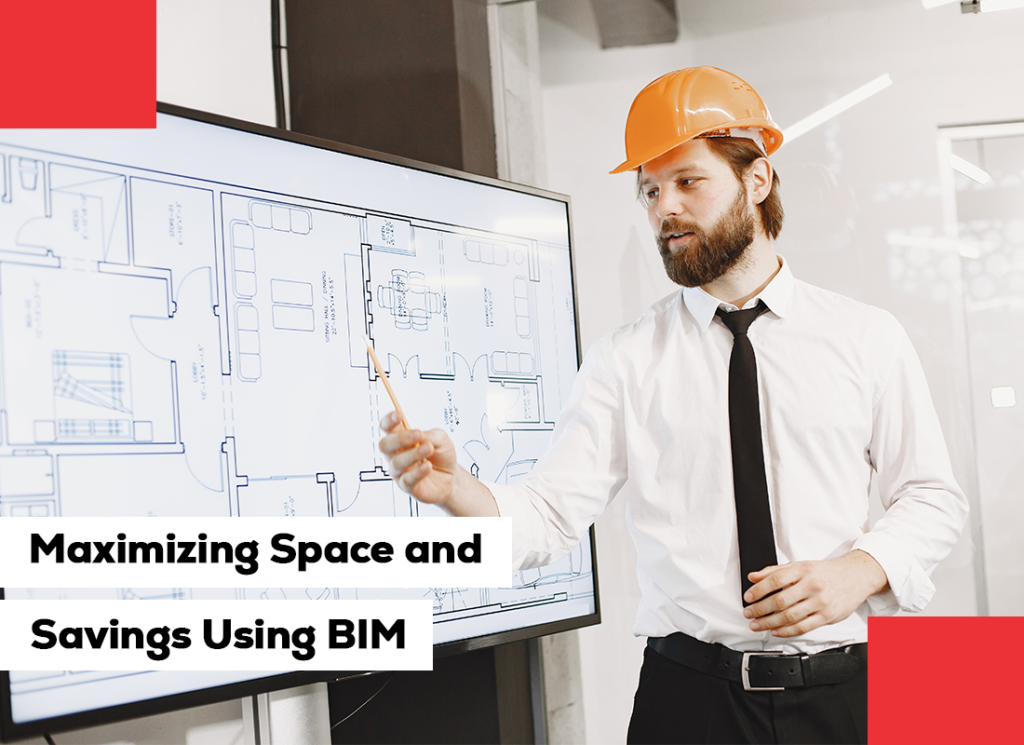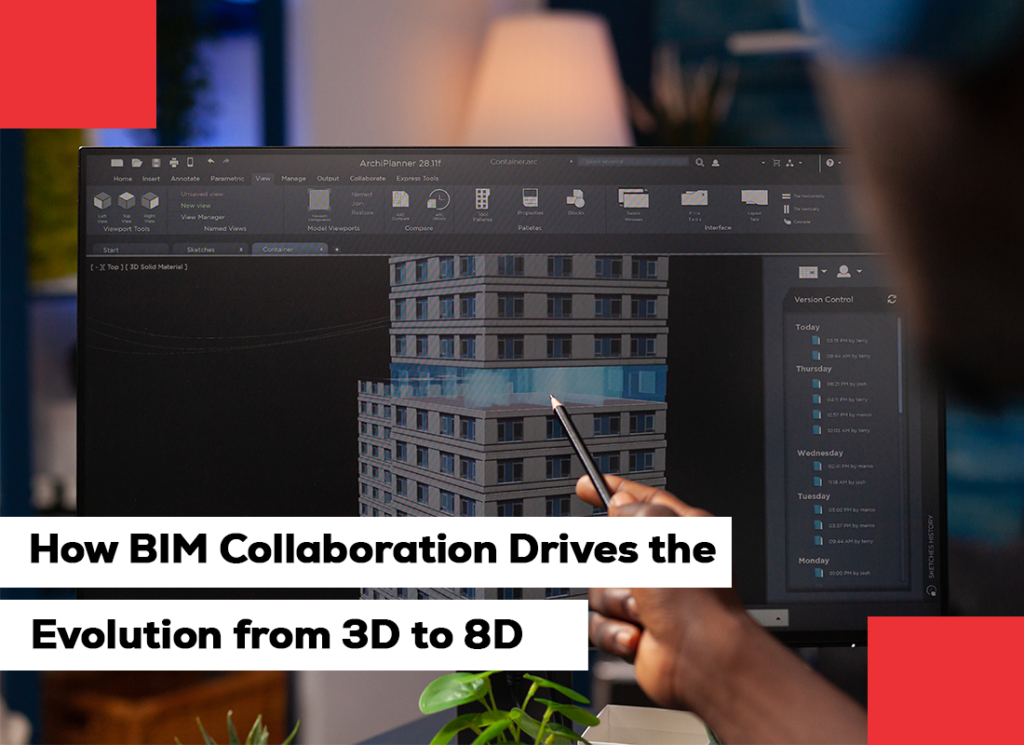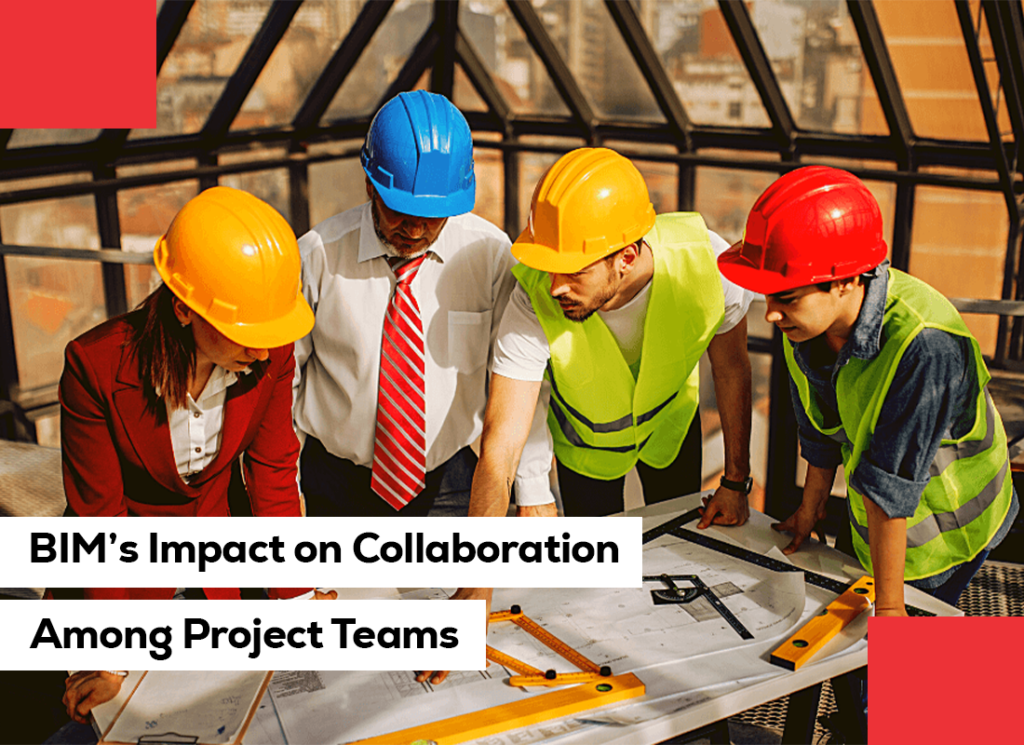In-Depth Guide for BIM 360 Design Collaboration

Today, the AEC industry is moving at an incredible pace, driven by the demand for better-connected, transparent, and effectively managed project workflows. Assuring correct design coordination becomes difficult with multi-disciplinary project teams working across various locations, time zones, and digital environments. This is where BIM 360 Design Collaboration has emerged as one of the most reliable solutions to enable structured, efficient, and real-time BIM collaboration during the project life cycle. At Geninfo Solutions, we have experienced firsthand how cloud-driven BIM platforms smooth the way in communication, reduce design conflicts, and ultimately give teams the confidence to make faster, more informed decisions. This in-depth guide explores how BIM 360 Design Collaboration works, its features, the workflow advantages, and why it has become so vital for organizations looking to strengthen their approach to BIM collaboration. Understanding BIM 360 Design Collaboration BIM 360 Design Collaboration is a cloud solution designed to support the entire design process-from conceptual development through detailed modeling, bringing all project disciplines into a single, controlled environment. It allows the architecture, structure, MEP, and specialty contractors to create, review, modify, and track model changes in real time. The real power of BIM 360 lies in how it structures BIM collaboration. Rather than being dependent on e-mails, inconsistent file versions, or fragmented workflows, it provides a single environment where the work is published, packages are shared, updates are analyzed, and version history is maintained with ease. Such transparency assures accuracy in projects and reduces any chances of outdated information making it to the site. Why BIM 360 Design Collaboration Matters Today Construction workflows are increasingly complex in nature. Projects involve more subcontractors, early-stage coordination requirements, accelerated timelines, and greater client expectations. Unfortunately, without an effective BIM collaboration strategy, teams often face: Clash-filled models because of poor alignment Miscommunication between design disciplines Delayed approvals and slow decision-making Errors due to out-of-date file versions Increased rework and budget overruns BIM 360 Design Collaboration overcomes many of these challenges by offering a structured, cloud-first environment where all stakeholders can work confidently with the most up-to-date model data. As employees increasingly work from home and project teams become more distributed, the value of real-time BIM-based collaboration has become more critical than ever. Key Features That Make BIM 360 Design Collaboration Effective Understanding how the platform supports effective BIM collaboration requires probing into its core capabilities: 1. Cloud-Based Model Storage and Access All project models, sheets, and documents are located in the cloud; thus, teams can access the most recent files from any location. There are no chances of having duplicate files, and no team will ever work on an older version of a file. 2. Multi-discipline design workflows It clearly separates the disciplines like architectural, structural, and MEP, although it keeps all of them within one environment. Teams can publish their work individually and then choose when to share updates with other disciplines. This controlled exchange is a major advantage of BIM collaboration. 3. Design Collaboration “Packages” One of the key features of BIM 360 is the ability to create and share design packages. Design packages include specific sets of models, updates, drawings, and references that other disciplines can review. This structured approach: Improves clarity Reduces confusion Maintains a clean version history Supports well-organized BIM-based collaboration 4. Visual Change Tracking Teams can directly see and compare different versions of the model on this platform. Furthermore, it shows changes such as added elements, removed objects, modified geometry, or updates to systems. Visual change tracking significantly enhances BIM collaboration in that teams will not have to manually sift through complex models to identify their differences. 5. Issue Management and Communication Tools Integrated communication tools enable team members to: Raise issues Assign tasks Add comments Attach supporting documentation Monitor progress This makes the coordination of models efficient, transparent, and traceable. 6. Secure Worksharing for Revit Users BIM 360 lets teams of Revit users collaborate on models together safely. Rather than using local servers, designers can engage in true cloud collaboration that is more flexible and reliable. How BIM 360 Design Collaboration Enhances the Project Lifecycle This platform enhances efficiency in all phases of project delivery. Let’s break it down: 1. Concept and Early Design BIM collaboration in early stages helps align the design vision across disciplines by allowing teams to check conceptual geometry, validate space planning, and ensure that architectural intent aligns with the structural and MEP feasibility. 2. Design Development During DD phases, BIM 360 supports: Clash analysis Design coordination Update tracking Fast feedback loops Consequently, this results in fewer inconsistencies at later stages. 3. Pre-construction coordination One of the many advantages that come with using BIM 360, it gives support for coordinated models before the pre-construction teams. With clean and accurate models, estimators, schedulers, and planners can do their jobs more effectively. Essentially, strong early BIM collaboration leads to better overall project predictability. 4. Construction Execution While the main focus of BIM 360 Design Collaboration is design-related aspects, its integrated BIM 360 ecosystem addresses construction-based processes through site coordination, model viewing on tablets, issue tracking, and document access. This gives the contractor real-time clarity on complex installations. Benefits of using BIM 360 design collaboration: Organizations that embrace this platform show definite improvements in efficiency, coordination, and the quality of project delivery. Key benefits include: 1. Better multi-disciplinary alignment The structured, package-based workflow ensures clarity among all stakeholders. This is the foundation for great BIM collaboration. 2. Fewer Design Conflicts Real-time updates, clash detection integrations, and transparent communications greatly reduce conflicts that would otherwise lead to rework. 3. Higher Productivity and Time Savings With central cloud access, teams can spend less time searching for files, waiting for emails, or reconciling outdated revisions. 4. Powerful Version Control and Traceability Every shared update is logged with a complete version history. This protects teams from miscommunication and design misalignment. 5. Better Design Quality Indeed, consistent review cycles, organized documentation, and clear coordination pathways help in ensuring better design accuracy. Implementing BIM 360 Design Collaboration Successfully. The following best practices
Comprehensive Guide for Modern Virtual Construction Services

Construction enters a new era, one where decisions are informed, coordination is seamless, and teams are able to visualize the entire build long before stepping onto the site. This is the power of Virtual Construction Services. Driven by the need for accuracy, speed, and predictability, the industry is transforming traditional workflows into digital-first processes. As projects grow in both complexity and client expectation, these services increasingly become must-have tools in the delivery of smarter, safer, and more efficient construction outcomes. At Geninfo Solutions, we’ve seen how this shift toward digital construction is reshaping the whole AEC environment. What once depended on manual drawings and reactive problem-solving is now driven by data-rich models, simulations, and collaborative platforms. This blog provides in-depth, practical guidance on how to understand the full potential of Virtual Construction Service, how it integrates across project stages, and why it’s now integrated into modern project delivery. Understanding Virtual Construction Services Virtual Construction Services involve the development of a highly detailed virtual representation of the project in question before the commencement of actual construction. This includes 3D modeling, integration of data, simulations, scheduling analysis, cost estimation, site logistics, and more. These virtual environments enable project teams to locate problems early, comprehend dependencies, enhance collaboration, and offer full visibility into the cycle of a project. The industry is moving from reactive problem-solving to proactive planning as more construction teams embrace Virtual Construction. This shift ensures less rework, increased safety, productivity, and better communication among all stakeholders involved in both design and execution. Why Virtual Construction Is Critical in Today’s AEC Landscape Today’s construction projects involve multiple disciplines working under strict timelines and budgets. Traditional methods typically lead to miscommunication, design inconsistencies, cost overruns, and delays in schedules. Virtual Construction Services resolves these long-standing challenges by: Eliminate design gaps with coordinated digital models Identifying clashes before materials reach the site. Providing real-time access to design updates Improving cost and schedule forecasting Ensuring accuracy and accountability across teams. This is the digital-first mindset that allows contractors, engineers, and architects to make informed decisions grounded in visual clarity and reliable data. Key Components of Modern Virtual Construction Services To understand the full value of Virtual Construction Services, one must delve into the core elements driving virtual project delivery. 1. BIM-Based Coordination BIM forms the backbone of most electronic construction workflows. Driven by data, 3D models in BIM will enable project teams to visualize structures, detect conflicts, extract quantities, and ensure design consistency. The advanced BIM consulting services offered by Geninfo Solutions enhance these workflows by enabling the seamless coordination of all trades. The outcome is that an integrated environment where clashes are detected and resolved much earlier, designs are validated much quicker, and construction teams can work with full confidence. 2. 4D & 5D Construction Simulation 4D-time and 5D-cost remain critical components of any construction project. Virtual simulations help a team see just how this project is going to go, plan and highlight schedule risk, optimize activities, and budget forecasts accurately. Powerful 4D/5D simulations help project managers optimize workflows, visualize construction sequences, and have all teams aligned on timelines and changes in budgets. 3. Digital Twins A digital twin serves as a living, regularly updated version of the physical project. It combines BIM models with real-time data from sensors, on-site equipment, or manual inputs. This will enhance construction oversight and provide insight into: Real-time site status Asset performance Progress validation Improved planning for operations and maintenance Digital twins bridge the gap between the virtual and physical worlds, improving project delivery and long-term facility performance. 4. Visualization, Rendering & VR Walkthroughs Interactive 3D views, photorealistic renderings, and VR walkthroughs help stakeholders understand the design intent clearly. These tools support better communication, faster approvals, and stronger engagement throughout the project lifecycle. Clients can “walk through” the space before construction begins, ensuring their expectations align with the final design. 5. Quantity Takeoffs and Cost Management Data-driven quantity extraction minimizes errors and always makes cost estimations current after design changes. This is extremely useful during design development and pre-construction, when budgeting accuracy is of the essence. 6. Site Logistics & Safety Planning Through virtual simulation, project teams can plan the site layout, crane positions, access routes, material staging areas, and worker movement pattern. Safety risks can be identified early, allowing for strong mitigation strategies. How Virtual Construction Benefits Every Stage of Project Delivery Virtual Construction Services greatly enhance workflows throughout all stages of a project: 1. Pre-Construction During this phase, virtual construction helps with: Clash detection Design refinement Value engineering Cost estimation Scheduling Risk analysis Trade coordination Project teams enter construction with fewer uncertainties and clearer strategies. 2. Construction Stage Once the project moves on-site, digital models and simulations guide field teams, ensure installation accuracy, and provide quick access to updated drawings and models. AR tools help installers verify positions of MEP systems, walls, and structural elements in real time. 3. Post-Construction BIM and virtual models support: Facility management Asset tracking Maintenance planning Operations optimization Owners acquire secure digital documentation to improve the long-term lifecycle of the building. Advantages of Using Modern Virtual Construction Services Executed with precision, these workflows offer measurable improvement on every project: 1. Reduced Rework Costs Most construction rework arises from design coordination issues. Virtual construction deals with clashes early and helps avoid costly correction on site. 2. Faster Project Delivery Teams visualize dependencies, detect bottlenecks, and optimize schedules with 4D simulations. 3. Improved Collaboration As all stakeholders begin to work off a single, centralized digital model, communication becomes cleaner and faster. 4. Accurate Budgeting 5D modeling links cost information directly to design changes so that teams can make decisions based on financial parameters. 5. Better Construction Quality Digital prototypes will help guide installation and make sure the final build matches what is intended. Why Virtual Construction Is the Future As digital tools get more advanced, virtual construction will integrate further: Cloud-based collaboration Real-time field data capture AI-powered design suggestion Automated clash resolution Predictive analytics Advanced visualization platforms The industry is rapidly
Optimizing BIM/CAD Integration with Modern GIS Tools

The architecture, engineering, and construction (AEC) sector is experiencing a digital shift in which integration and data connectivity equal project success. Design and construction processes have been built on BIM services and CAD services for years, allowing for accurate modelling and documentation. Yet, as projects have increased complexity and geographic dispersion, the requirement for contextual awareness, knowing how a building interacts with its environment, has become paramount. This is where GIS (Geographic Information Systems) integration takes over. The integration of BIM, CAD, and GIS creates an integrated digital environment where spatial information intersects with design insight. For Geninfo Solutions, we specialize in maximizing this integration to provide data-informed insights that increase planning accuracy, design productivity, and sustainable results. This blog explores how combining BIM/CAD with modern GIS tools can revolutionize the way we design, manage, and operate built environments. The Evolving Digital Landscape: BIM, CAD, and GIS Before diving into integration, it’s essential to understand how these systems function individually. CAD (Computer-Aided Design): CAD is the foundation of 2D drafting and 3D modelling. With CAD, it is possible to create technical drawings and detailed designs precisely. Our CAD services make sure that every engineering, architectural, and structural component is accurately represented for construction and fabrication. BIM (Building Information Modelling): BIM goes one step beyond CAD. It includes intelligence in models by integrating data on materials, performance, and lifecycle management. With BIM services, we create digital models that are a single source of truth throughout the project lifecycle. GIS (Geographic Information System): GIS adds spatial context to mapping actual locations and terrain. GIS enables planners and architects to weigh how natural terrain, infrastructure, and environmental considerations affect design decisions. Separately, each system brings valuable functionality. Together, they become a robust platform where project information and geographic data come together to provide better insights and better solutions. The Need for BIM/CAD and GIS Integration As cityscapes grow and projects become increasingly data-driven, it is no longer sufficient to build structures in a siloed manner. The combination of BIM, CAD, and GIS closes the gap between design and real-world application, offering a 360-degree simulation of a project’s spatial and functional context. Our team at Geninfo Solutions takes advantage of this convergence to: Increase location intelligence and site planning. Facilitate infrastructure coordination with the surrounding environment. Provide real-time updates and decision-making across the life of a project. Integrating CAD and BIM with GIS means that all design elements fit together perfectly in their physical environment, facilitating improved planning, less risk, and more sustainability. How Integration Works Integrating BIM/CAD with GIS requires connecting the geometric precision of BIM models and CAD diagrams with the spatial data layers that GIS offers. This allows design teams to see how buildings fit into their real-world environment, taking into account such elements as topography, climate, transportation, and local utilities. For example: CAD-based site plans can be georeferenced inside GIS so that designs are aligned with real-world coordinates. BIM models can be integrated with GIS data to model environmental effects, determine accessibility, or design infrastructure connectivity. GIS data can be applied for flood risk assessment, urban planning, and land-use analysis, adding richness to the design intelligence in BIM modelling services. This multi-dimensional merger leads to a data-intensive, geospatially conscious model that enables more intelligent decision-making across disciplines. Advantages of BIM/CAD-GIS Integration 1. Improved Site Planning and Visualization When BIM and CAD information are georeferenced in GIS environments, planners are able to examine several site conditions simultaneously, terrain grades, land use, transportation networks, and utility infrastructure. This integrated perspective enhances site selection, feasibility studies, and environmental regulatory compliance. With BIM services, we bridge design models with spatial information in order to enable stakeholders to imagine not only the building itself but also how it relates to its environment. 2. Enhanced Decision-Making through Data-Driven Insights By uniting BIM expertise and geospatial information, decision-makers have access to entire datasets of information that guide design and construction planning. Urban planners, for instance, can analyze infrastructure layouts against population density or environmental limitations. With this convergence, the same platform becomes a cohesive decision-making environment where design intent and actual site conditions are synchronized. 3. Efficient Project Coordination Incorporating GIS data into BIM modelling services minimizes information silos and streamlines collaboration amongst multidisciplinary teams. Engineers, architects, and urban planners can collaborate within a common digital space, maintaining data consistency and spatial precision across the life of the project. The integrated workflow enables superior BIM project management, where coordination among stakeholders is in real-time and data misalignment errors are eliminated. 4. Sustainable Design and Environmental Analysis GIS data allows for analysis of topography, vegetation, water flow, and solar exposure. When embedded in BIM services, it informs the development of sustainable and energy-efficient designs. For instance, the use of solar radiation data can optimize building orientation, and analysis of topography can inform foundation design or drainage planning. The outcome is a sustainable context-aware project that minimizes environmental footprint and operational expenses. 5. Lifecycle Asset Management Once the project progresses from design to operation, BIM-GIS integration remains beneficial. The integrated model can be utilized by facility managers to track infrastructure, schedule maintenance, and analyze performance over time. By correlating as-built BIM models with GIS data, operators get location-centric insights that enhance asset management, maximize space utilization, and maximize facility lifespan. At Geninfo Solutions, we leverage BIM tools that are tightly integrated with GIS platforms to provide continuous operational insight long after project completion. Pivotal Tools and Technologies Enabling Integration Emerging software solutions are enabling easier integration of BIM/CAD and GIS than ever. Autodesk Revit, AutoCAD, Esri ArcGIS, and InfraWorks are some of the tools that come with built-in connectors that enable data synchronization between platforms. These integrations enable users to: Directly import GIS data into BIM environments. Geolocate CAD designs with correct coordinate systems. Publish BIM models to GIS portals for public or stakeholder use. By linking CAD services and BIM services with contemporary GIS tools, project teams gain an unprecedented degree of precision and transparency. Challenges in
Maximizing Space and Savings Using BIM

With the fast-evolving AEC industry, the key to every successful project is efficiency. Space utilization, waste reduction, cost management, whatever the concern, optimal outcomes demand accuracy and prudence. This is where the impact of BIM services comes in, transforming the way spaces are planned, designed, and delivered. At Geninfo Solutions, we believe that each square meter of a project is precious. With top-of-the-line BIM modelling services, we facilitate clients to unleash dormant efficiencies, automate construction processes, and eventually save space and dollars. This not only improves design accuracy but also provides environmentally friendly and cost-effective project results. Embracing the Power of BIM Building Information Modelling (BIM) is more than just a 3D design tool, it’s an intelligent process that integrates multidisciplinary information to create rich digital representations of physical and functional building attributes. By integrating the architecture, structure, and MEP (Mechanical, Electrical, and Plumbing) systems into one model, BIM services facilitate an end-to-end view of a building’s life cycle from initial concept design through operation and maintenance. The benefit? Greater coordination, fewer rework, and major cost savings. For developers, builders, and architects, BIM is the blueprint to smarter, greener projects. Space Optimization Through BIM Space optimization is arguably the biggest construction and design challenge. A poorly thought-out floor plan can lead to more material than necessary being used, squandered space, and operational inefficiencies once completed. BIM solutions address these issues head-on by allowing architects and engineers to view, simulate, and modify layouts well before actual construction. 1. Intelligent Spatial Planning BIM models provide accurate insight into the performance of space under real conditions. Designers can model several different layouts, analyze circulation patterns, and assess spatial relationships between different spaces. This allows each space to perform as required, be it optimizing floor area in office structures or optimizing utility in compact residential works. 2. Clash-Free Coordination One of the strengths of BIM modelling services is clash detection. By uniting various design disciplines within one model, BIM identifies conflicts, such as overlapping structural beams, electrical conduits, or HVAC ducts, before they are built. Not only does this avoid waste of space, but it also minimizes the need for costly redesigns and wastage of materials on-site. 3. Adaptive Design Solutions Incorporating flexibility in designs is another method by which BIM maximizes available space. For instance, models can model modular arrangements or possibilities for expansion in the future, such that buildings can adapt to evolving needs. This flexibility is particularly useful for commercial and institutional buildings that will need to reconfigure space in the future. Cost Savings Made Possible by BIM In addition to space productivity, the economic benefits of BIM services go beyond. Through better project coordination, greater precision, and fewer errors, BIM translates into measurable cost savings across the project lifecycle. 1. Cost Saving on Rework and Errors Traditional design practices are often founded on 2D drawings, which can lead to miscommunication and costly onsite errors. BIM addresses these challenges with data-rich 3D visualization and real-time coordination of disciplines. Design revision is propagated automatically through the model, keeping all teams in sync and reducing rework. Across the global construction industry, in studies, it has been stated that the utilization of BIM will reduce rework cost by as much as 40%, a direct bottom-line benefit. 2. Accurate Quantity Take-offs With BIM modeling services, quantities of materials can be selected directly from the model to facilitate proper cost estimation and procurement. Not only does this render the budget more realistic, but it also stops contractors from over-purchasing materials, one of the key drivers of cost overruns. 3. Enhanced Construction Scheduling Integrating 4D scheduling into BIM allows project teams to visualize construction sequences in time terms. By defining possible delays in advance and improving task sequencing, teams can minimize idle labor time along with resource wastage. Saved time is saved money, one of the biggest advantages of using BIM project management. 4. Enhanced Facility Lifecycle Value BIM’s value is not limited to the point when the construction is complete. The virtual model is an enduring asset at the facility management stage with rich material, equipment, and maintenance schedule information. It supports smooth operation, reduces maintenance costs, and optimizes the building’s lifespan, generating extra economic value in the future. BIM Collaboration: The Key to Smooth Implementation Collaboration is the backbone of any successful project, and BIM collaboration promotes real-time communication and coordination among all the stakeholders. Engineers and architects, contractors, and facility managers are all working on one single model that updates dynamically. This shared space reduces miscommunication and enables speeded decision-making. Cloud-based solutions also enable remote collaboration, with project teams being able to view and update information anywhere, an essential component in today’s globally integrated construction world. At Geninfo Solutions, we are committed to collaborative BIM workflows that build transparency, efficiency, and accountability through the life cycle of the project. Integrating BIM into Project Management When used correctly, BIM transforms not only the design process but also project delivery and management. Project management using BIM is based on leveraging the model as a central platform for cost management, scheduling, resource management, and monitoring performance. 1. Simplified Communication and Reporting With all project information in one place within a BIM environment, stakeholder communication is faster and more accurate. Teams can generate real-time reports, track progress graphically, and identify potential delays at the touch of a button. 2. Risk Mitigation BIM’s analytics allow identifying construction and design risks before they impact the project timeline and budget. With several “what-if” simulations, project managers can make informed decisions to minimize potential issues at the early stages. This forward-thinking approach ensures fewer delays, less ambiguity, and more consistent outcomes, a hallmark of effective BIM project management. Sustainability and Long-Term Efficiency Green building is not an option; it’s mandatory. With BIM services, architects and engineers can analyze energy efficiency, lighting levels, and material performance before construction even begins. This enables designs to optimize natural light, ventilation, and energy usage, reducing operational costs. In addition, BIM supports green practices through minimizing
As-Built Drawings That Ensure Compliance with Building Codes

In the world of building construction, each project relies on accurate planning, smooth execution, and correct documentation. Of the numerous documents created throughout a building’s lifespan, as-built drawings are one of the most important for guaranteeing that a finished building conforms to design intent and complies with all relevant codes. These documents are more than pieces of paper; they are a foundation of responsibility and long-term worth. Knowing As-Built Drawings As-built drawings are precise diagrams of a project as it has been built, not as originally conceived. On-site changes are frequently made during construction to meet structural issues, availability of materials, or client demands. These changes can result in differences between approved design and final product without proper documentation. By accurately documenting each change, as-built documentation preserves the precise size, location, and specifications of building components, from beams and walls to fire protection systems, electrical conduits, and mechanical devices. With this information in hand, project teams and building owners can verify that the completed work complies with safety standards and quality criteria. The Role of As-Built Drawings in Code Compliance One of the primary functions of as-built drawings is to illustrate compliance with codes and standards in buildings. Inspectors, architects, and engineers use these documents to ensure that structural elements, fire escapes, plumbing plans, and energy systems comply with requirement that are obligatory. When an authority or regulator requires proof that construction conforms to sanctioned permits, as-builts serve the purpose. They eliminate ambiguity and enable specialists to easily detect any deviation that could warrant corrective procedures prior to issuing occupancy permits. Further, accurate as-builds make future audits easier, facilitating smooth integration with changing regulation without necessitating invasive exploration work. Benefits of As-Built Drawings Services While contractors can manually mark up plans, collaborating with organizations that provide professional as-built drawings services guarantees a degree of accuracy beyond compare. These professionals utilize cutting-edge technologies, like 3D laser scanning, drones, and Building Information Modeling (BIM), to document real-world condition and convert them into crisp, detailed documents. High-quality as-built drawings services help all stakeholders in a construction project. Owners have dependable references for facility management, architect and engineer can confidently plan renovations or expansion, and contractors avoid risks during project close-out since disagreements over what was constructed versus what was planned can be alleviated through accurate documentation. Another benefit is efficiency and speed of service. Digital technology enables rapid data collection on-site, translation into precise CAD or BIM models, and delivery in standardized forms for convenient sharing. It saves time as well as enhances collaboration among project teams. Why Choose As-Built Drawing Services in Canada For companies doing business in Canada, hiring experienced providers like Geninfo Solutions of as-built drawing services in Canada is critical. Canadian building codes vary by province, and requirements for documentation can also vary based on the nature of the project, residential, commercial, or industrial. A group of people familiar with local requirements can make your records not just technically adequate but also compliant with the requirements of inspectors and permitting officials. When you hire professional providing as-built drawing services in Canada, you are taking advantage of their familiarity with regional compliances needs, as well as their project-handling capability across different jurisdictions. These experts also appreciate the significance of precision in cold-weather building or seismic areas, where adherence to precise structural and safety regulation is crucial. From constructing a new building to remodeling an existing one, regional experiences avoid delays and surprises. Streamlining Facility Management and Future Projects Apart from complying with regulatory requirements, as-built drawings provide long-term benefits for long-term building maintenance and future expansion. Facility managers can refer to these records to find shut-off valves, service electrical panels, or modify mechanical equipment without ruining the surrounding elements. Detailed records also reduce guesswork during rebuilding, enabling design teams to plan the layout and steer clear of interference with the existing infrastructure. For building owners, as-builds facilitate lifecycle cost management through the recording of materials, finishes, and installed systems. This data is invaluable for repair budgeting, energy upgrade planning, or even selling a property. When renovation or expansion takes place, accurate documentation speeds approvals and minimizes change-order litigation. Best Practices for Successful As-Built Documentation To ensure that the value of as-built drawings is realized to its fullest potential, consider implementing the following best practices: Involve experts early: Introduce experts providing as-built documentation services right from the start of construction. Regular updates throughout each stage avoid mistakes and ensure that no change is overlooked. Utilize current technology: Instruments such as 3D scanners and BIM software measure data to millimeter accuracy and enable interactive models rather than passive paper documents. Standardize formats: Clear labeling and consistent templates ensure that drawings are easy to read, regardless of whether they’re examined by inspectors, contractors, or maintenance personnel. Have version control: Track changes to prevent confusion and ensure everyone consults the most recent information. Store securely: Safeguard your investment by storing drawings both digitally and in hard copy format for rapid recall when required. By adopting these practices, you guarantee the integrity of your records and make compliance verification easier in the years ahead. Detailed and accurate documentation is critical to successful construction and extended building performance. Investing in professional as-built drawings gives a reliable foundation for code compliance, effective facility management, and informed decision-making throughout a property’s life cycle. Whether managing a residential complex, a corporate office building, or an industrial site, involving expert providers means your project is safe and of high quality from the beginning. For organizations in any province, selecting specialists Geninfo Solutions who provide top-notch as-built drawing services in Canada provides an additional level of confidence that all details comply with provincial codes and industry standards. Ultimately, as-built documentation is not just a regulatory requirement; it is a strategic asset that protects your investment, supports maintenance teams, and positions your building for future growth.
How BIM Collaboration Drives the Evolution from 3D to 8D

At Geninfo Solutions, we’ve seen firsthand how computer-aided construction solutions have transformed how projects are envisioned, planned, and realized. Of these, BIM collaboration is the most impactful driver, enabling teams to collaborate, minimize waste, and construct more intelligently. The evolution from simple 3D modeling to sophisticated 8D workflows is fueled by smooth collaboration, and our BIM services expertise ensures clients extract maximum value at each stage. Understanding BIM Collaboration BIM (Building Information Modelling) is not geometry alone. It is the union of intelligent information, processes, and individuals. Collaboration in BIM provides a shared space where architects, engineers, contractors, and owners collaborate on one source of truth. This methodology minimizes mistakes, enhances transparency, and enables information to expand in richness and depth as the project matures. By incorporating BIM collaboration into our workflows, Geninfo Solutions makes sure that each new layer, time, cost, sustainability, safety, or operation, is accurately linked to design information. The Journey from 3D to 8D Development of BIM dimensions is best described as a value ladder. Each step introduces fresh smarts, and BIM collaboration connects them so they don’t get isolated. Modelling Geometry, spatial coordination Accurate drawings, clash detection 4D – Time Scheduling and sequencing Visualizing build programmes 5D – Cost Quantity take-offs, estimates Live cost control 6D – Sustainability Energy and environmental data Green ratings, lower energy bills 7D – Facility Management Asset and maintenance info Smarter lifecycle planning 8D – Safety Risk and hazard data Safer construction and operation With Geninfo Solutions‘ BIM modelling services, such dimensions are given the foundation. With proper 3D geometry in place, further information can be added sequentially in a logical manner, meaning projects grow without disorganisation. Why BIM Collaboration Is Required 1. Centralised Data Collaboration ensures that all work is done on a common dataset. This avoids duplicate effort and guarantees that geometry, schedule, or cost changes are reflected immediately. 2. Early Risk Detection A robust teaming culture identifies design conflicts, cost overruns, or safety issues early on before construction begins. 3. Integrated Decision-Making Connecting teams through a shared platform enables trade-offs, like cost vs. sustainability or safety vs. speed, to be tackled in real time. 4. Transparency & Accountability Each update can be traced, and accountability is clear. Our BIM project management staff organizes meetings, reviews, and approvals so decisions are recorded. Geninfo’s Approach to BIM Evolution We find that embracing cutting-edge BIM dimensions is only effective when it’s based on people-focused processes. Here’s how we do it: 1. Strategy & Roadmap We begin by assessing client objectives and determining which dimension brings the greatest value. No matter if you’re looking to simply implement 4D scheduling or complete 8D implementation, we create a plan that suits. 2. Modelling Excellence Our BIM modelling services build accurate digital twins that are the single source of truth. Geometry is checked, and data attributes are seeded to enable higher dimensions. 3. Integrated Management With strong BIM project management, we tie disciplines together and keep momentum going. Meetings, task lists, and quality control keep progress in line with your schedule. 4. Training & Support A project will only profit from collaboration if everyone knows it. We train teams in model use, data input, and procedures. 5. Ongoing Quality Checks Routine audits guarantee that information in 4D, 5D, or 8D is trustworthy. Overcoming Usual Challenges Scaling BIM dimensions poses challenges: Siloed Workflows: addressed by excellent BIM collaboration platforms. Software Conflicts: solved by choosing interoperable software within our BIM services suite. Cultural Resistance: minimized through workshops and small pilot stages. Data Overload: managed by establishing naming rules, permissions, and lifecycle policies. These controls ensure information remains usable from initial sketches to operational handover. Real-World Impact of 8D BIM Projects that implement all eight dimensions realize: Reliable schedules and budgets. Uncluttered visibility of safety hazards before reaching the site. Reduced environmental impact due to built-in 6D analytics. A thoroughly documented facility model that continues to direct maintenance well beyond completion. Our experience indicates that the initial investment in using BIM collaboration reaps rewards during construction and well into the lifespan of the building. Steps to Start Your BIM Journey 1. Evaluate Current Capability Look at how far along you are with BIM maturity. Are you merely modeling in 3D, or already toying with scheduling and cost? 2. Establish Priorities Determine which dimensions are mission-critical. A housing build will require 3D–5D, whereas a hospital enjoys 6D sustainability and 8D safety. 3. Involve Specialists Collaborate with those who know the subtleties of every phase. Our BIM services integrate modelling, advisory, and integration. 4. Pilot & Refine Pilot small, measure, then scale. 5. Commit to Collaboration Maintain open communication channels for data sharing, reviews, and approval throughout the delivery process. The transition from 3D models to 8D intelligence is not a jump but an organized ascent. It all hinges on building a cooperative culture, aided by appropriate tools and an explicit roadmap. At Geninfo Solutions, we provide that framework. With extended BIM services, reliable BIM modelling services, and organized BIM project management, we ensure that every dimension builds upon the previous one. Leverage the power of BIM working with us, and make your project an authentic multi-dimensional success.
BIM’s Impact on Collaboration Among Project Teams

At Geninfo Solutions, we know that the success of a construction project relies not only on good design and implementation, but also on successful collaboration between all stakeholders. The architects, engineers, contractors, and government officials who collaborate on large projects may have communication gaps, data mismatches, and delays, which can hamper progress. This is where Building Information Modeling (BIM) comes into play. With advanced BIM services, project teams are now able to collaborate on a common platform, receive real-time, accurate information, and be aligned at all phases of a project. The result is greater efficiency, reduced errors, and more robust results for the development of infrastructure throughout Canada. Why Collaboration Matters in Construction There is always a network of stakeholders in each infrastructure project. The absence of coordination among them can lead to the following: Late-stage design conflicts. Miscommunication that causes cost overruns. Delays in the schedule are brought about by siloed workflows. Less accountability across teams. These are all minimized with BIM services. BIM unites teams within a single environment where collaboration becomes flawless, transparent, and results-oriented. The Role of BIM in Enhancing Collaboration BIM isn’t solely about 3D modeling, it’s about creating a digital environment in which all the players can work together effectively. At Geninfo Solutions, our BIM services allow: Real-time data sharing: with every participant having access to current information. Clash detection: preventing conflicts between disciplines from arising in the first place. Better decision-making: through visual models and linked data. Through making communication more seamless, BIM enhances partnerships and enables project teams to work towards common objectives. BIM Modelling Services: The Key to Collaboration Collaboration starts with concise, correct project images. All stakeholders can view the project in three dimensions through our BIM modelling services, eliminating uncertainty from design plans Most significant advantages are: Design clarity: anyone can read models more readily than 2D drawings. Interdisciplinary integration: structural, architectural, and MEP systems are all integrated. Data-driven insights: every model component contains detailed information, from materials to budget. With BIM modelling services, it is no longer isolated teams that collaborate. Rather, the same model is accessed by stakeholders, promoting consistency and minimizing misunderstandings. BIM Collaboration: Silo-Breaking Real innovation exists with BIM collaboration, as various disciplines meet in one space. Rather than working in seclusion and then attempting to resolve differences afterwards, teams may now start collaborating. Advantages of BIM collaboration are: Early stakeholders’ involvement: all contribute toward planning. Fewer design conflicts: due to mutual visibility of models. Streamlined communication: minimizing the time spent resolving incompatible documents. Through BIM collaboration, project teams establish trust, have joint responsibility, and collaborate more effectively towards a common vision. Enhancing Efficiency with BIM Project Management Aside from design and modeling, project execution calls for precise management. Delays and cost overruns tend to happen because coordination is done in pieces. This is where BIM project management comes into its own. Through BIM project management, teams reap the following advantages: Centralized scheduling and tracking: allowing all to see milestones. Budget alignment: enabling decision-makers to track costs in real-time. Resource optimization: ensuring manpower and material are utilized effectively. This degree of control guarantees collaboration spans beyond design into construction and delivery, inspiring stakeholders’ trust in meeting project objectives. BIM Collaboration in Real-World Projects In reality, BIM collaboration is revolutionizing how projects are delivered throughout Canada: Transit expansions: Contractors and engineers work together in common models to reduce disruption. Healthcare projects: Engineers, medical planners, and architects coordinate designs for improved patient care. Public buildings: Government agencies, contractors, and consultants collaborate openly on project data. All of these examples illustrate how BIM facilitates smoother communication, fewer conflicts, and more robust outcomes. Benefits of Collaborative BIM Workflows Government agencies and private contractors who implement Geninfo Solutions’ BIM services receive: Lowered risks: problems are detected early, before expensive changes. Faster approvals: because stakeholders can see more clearly from the proposals. More accountability: since each team’s contribution is measured through the model. Improved quality: since coordinated effort leads to higher standards in building. Collaboration is more than an idea: it becomes a quantifiable benefit to all stakeholders. How Geninfo Solutions Facilitates Collaborative Success At Geninfo Solutions, we are experts at helping teams collaborate better. Our services are: Full-cycle BIM services that integrate design and execution workflows. Detailed BIM modeling services that deliver clarity and accuracy. Sophisticated BIM project management tools for real-time visibility. Enabling BIM collaboration with all stakeholders to ensure alignment. We know that infrastructure is not about buildings, but about bringing people, processes, and technology together into a shared vision of success. Collaboration has always been at the heart of construction, but with BIM, it has been taken to another level. Through BIM collaboration, project teams eliminate silos, enhance communication, and complete infrastructure projects more efficiently. With Geninfo Solutions’ BIM services expertise, contractors and agencies are able to benefit from tools and processes that facilitate collaboration and make it easier and more efficient to work together. From BIM modeling services that make designs easier to understand to BIM project management that optimizes implementation, we enable teams to work together seamlessly and produce projects that serve Canada’s infrastructure requirements today and in the future.
How BIM Will Shape Canada’s Government Infrastructure

We at Geninfo Solutions believe that Canada’s government infrastructure is at a turning point. Public agencies are under increasing pressure to renew old assets, achieve sustainability targets, and deliver projects that meet the demands of expanding populations. At the heart of this change lies Building Information Modeling (BIM). By using advanced BIM services, agencies can enhance efficiency, collaboration, and decision-making at every phase of infrastructure development. From health facilities and mass transit systems to bridges, schools, and civic buildings, BIM is transforming the way government projects are designed, built, and maintained. The Challenges of Government Infrastructure in Canada Canada’s infrastructure is full of opportunities and challenges: Aging infrastructure: Much of the nation’s bridges, roads, and water plants are reaching the end of their useful lives. Budget austerity: Agencies face pressure to provide value without extravagance. Climate ambitions: Canada’s net-zero vision requires environmentally aware planning. Multilevel coordination: Projects commonly feature numerous contractors, consultants, and regulators. Outdated practices buckle under these pressures. That’s why embracing BIM services is becoming a key approach to achieving reliability, transparency, and long-term sustainability. Strengthening Planning and Coordination Massive public works demand smooth coordination. Miscommunication or incomplete information can easily cause cost escalations and delays. BIM alters this by giving: A single-source data environment: allowing all stakeholders to work from the same, current model. Conflict detection early on: spotting design clashes prior to construction. Informed decision-making: enabling agencies with the means to investigate several design alternatives. Through the use of our BIM services, Geninfo Solutions empowers government teams to design with accuracy and forego inefficiencies that seemed unavoidable in the past. Unlocking the Value of BIM Modelling Services Hiding at the core of BIM is the development of extremely detailed 3D models. Our BIM modelling services provide: Full visualization: enabling stakeholders to view the entire project in virtual space. Integration of systems: consolidating architecture, structure, and MEP into one model. Data-rich information: integrating materials, pricing, and lifecycle information into every component. As an example, hospital design can be optimized by BIM modelling services as planners get to streamline patient movement, equipment positioning, and energy systems before the ground-breaking. Risks are minimized, costs are saved, and more functional infrastructure is created. Delivering Projects Through BIM Project Management Implementation is usually the most troublesome phase of infrastructure. Delays, changing requirements, and surprise costs can disrupt even the best-planned project. That’s why BIM project management plays a key role. At Geninfo Solutions, we assist public authorities in managing: Schedules: monitoring progress in real time. Resources: proper utilization of manpower and materials. Costs: balancing budgets with actual construction work. With BIM project management, Canadian government agencies can decrease delays, increase accountability, and make each project live up to its potential. Long-Term Value of Building Information Management Although planning and construction are critical, real value is realized in the operational stage of infrastructure. Building information management has a vital role to play here. Advantages include: Full asset visibility: from warranties to performance data. Active maintenance planning: minimizing downtime and expense of repair. Support for sustainability objectives: with real-time monitoring and reporting of energy. Government agencies have greater control over facilities and ensure they remain efficient and resilient for decades with building information management. Supporting Canada’s Sustainability Objectives Sustainability is no longer a choice – it’s a national imperative. BIM enables green building projects through: Energy performance simulation during design. Minimizing waste through precise material estimates. Verification of LEED and other environmental guidelines. Through BIM services, public infrastructure projects, from schools to transit centers, are planned to have minimal environmental impact and maximum long-term efficiency. Transparency and Public Accountability Taxpayers pay for government projects, which means there is a need for transparency. BIM increases accountability by: Offering real-time updates: allowing agencies to measure progress with precision. Enhancing communication: providing decision-makers with reliable information for reporting. Increasing trust: demonstrating to the public that funds are being spent responsibly. By embracing BIM modelling services, agencies provide citizens with visible outcomes supported by sound project details. Examples of BIM in Action Right across Canada, BIM is already revolutionizing infrastructure delivery: Public Transit Projects: Metro and light rail extensions are being enhanced by clash-free design and more efficient construction. Healthcare Facilities: Hospitals and clinics are being designed with BIM to ensure maximum efficiency and scalability. Educational Buildings: Schools are built using BIM to achieve sustainability requirements and accommodate flexible learning environments. These instances indicate how digital transformation is already revolutionizing government infrastructure across the country. Geninfo Solutions: Your Partner in BIM Excellence As Geninfo Solutions, we offer customized solutions that enable public authorities to thrive in the digital age. Our services encompass: End-to-end BIM services bridging design, construction, and operations. Accurate BIM modelling services for data-driven 3D visualization of projects. Sophisticated BIM project management for timely, cost-efficient delivery. Whole-of-life building information management for lifecycle optimization. We know that it’s not just about buildings, it’s about building strong, resilient communities and positioning Canada for a sustainable future. Canada’s government infrastructure is ready to change. BIM is not a tool; it is a method that brings people, process, and data together. With Geninfo Solutions leading the charge, agencies can take this leap of faith and provide projects that are smarter, faster, and built to last. From expert BIM services to secure BIM modelling services, strategic BIM project management, and full-building information management, we have the experience necessary to help Canada transition towards a future that is both sustainable and innovative. Together, we can create infrastructure that not only provides for the needs of today but also sustains generations in the future.
Top Firm for Mechanical & Plumbing Coordination Drawings

At Geninfo Solutions, we’re confident that each fantastic building stands only as firm as its systems, and behind those systems exists diligent coordination. As a top-ranked firm in our category, we’re dedicated to offering coordination drawings that align mechanical and plumbing systems with precision and clarity. Our professional process reduces clashes, improves construction efficiency, and guarantees effortless installation on-site. With years of practical experience and a thorough insight into the intricacies of projects, we provide Mechanical & Plumbing coordination drawings that form the foundation of effective building performance. Using state-of-the-art tools and our customized BIM Coordination Services, we make even the most intricate MEPF systems easy to navigate into well-structured, build-ready plans. Here’s why Geninfo Solutions is the go-to partner for your mechanical and plumbing coordination requirements. Appreciating the Role of Coordination Drawings Coordination drawings are precise plans indicating how various systems, mechanical, plumbing, electrical, fire protection, and structural, collaborate and co-exist in the building. For Mechanical and Plumbing systems, such drawings are critical to avoid ducts, pipes, and equipment interfering with structural beams, walls, or one another. Such drawings are prepared pre-construction and play a vital role in: Preventing on-site clashes Accelerating installation Minimizing waste of material Enhancing project accuracy and efficiency We develop these minute drawings on 3D modeling software such as Autodesk Revit and Navisworks at Geninfo Solutions. With our BIM Coordination Services, each line we draw adds up to more efficient construction and streamlined operations. Why Mechanical & Plumbing Coordination is Important In every commercial or industrial undertaking, Mechanical and Plumbing systems are complicated and interrelated. Ducts have to wrap around beams. Pipes require proper slopes. Valves require accessibility. Equipment must be accessible for servicing after installation. Without planning these aspects, it results in rework at a high cost, project delay, and safety hazards. Our coordination drawings circumvent these risks. We coordinate closely with your consultants, contractors, and architect to have all the mechanical and plumbing elements integrated within the architectural and structure model, leaving no surprises. Our Process: Precision Meets Collaboration Our process at Geninfo Solutions is precision-driven and collaboration-powered. Here’s how we approach Mechanical & Plumbing coordination drawings: 1. Model Integration We begin by merging architectural, structural, and all MEPF models into one BIM platform. With this one model, we can catch conflicts early and resolve them in the digital world before they reach the construction site. 2. Clash Detection and Resolution With Navisworks and Revit, we execute complex clash detection reports. All clashes between ducts and beams or plumbing lines and electrical conduits are reported, analyzed, and resolved. 3. Routing Optimization We don’t simply make lines; we route for optimization. Our team makes sure that each plumbing line and mechanical duct is routed in the most efficient, accessible, and least-cost path, without sacrificing the design intent. 4. Constructability Review All of our coordination drawings are subject to constructability reviews to ensure they can be built in the real world, not only on paper. We take space limitations, installation sequence, and maintenance accessibility into consideration. 5. Collaborative Coordination Meetings As part of our BIM Coordination Services, we engage in frequent coordination meeting with your project team. Continuous communication ensures that changes are in sync, approved, and updated in real-time. What Makes Geninfo Stand Out? Numerous companies provide drafting or modelling, but the reason why Geninfo Solutions is a top company for Mechanical & Plumbing coordination drawings is because of our end-to-end experience, technology-led approach, and commitment to providing value at each step. Expertise Across Industries From high-rise residential buildings and hospitals to data centers and manufacturing plants, we’ve created coordination drawings for diverse project types. This exposure gives us the adaptability to handle project-specific challenges with ease. Certified BIM Professionals Our team consists of certified BIM experts, mechanical engineers, and plumbing consultants who bring technical depth and practical experience to every project. Tech-Enabled Efficiency We leverage cutting-edge industry software like Autodesk Revit, Navisworks, AutoCAD MEP, and others. These enable us to build very detailed, clash-free, and scalable models. Open Communication Our clients appreciate the way we communicate. We don’t simply send you files; we walk you through our process, justify our choices, and respond quickly to feedback. Our coordination is as effective off the screen as on it. The Power of BIM Coordination Services Our BIM Coordination Services are not isolated to Mechanical and Plumbing alone. They are comprehensive services that consolidate all disciplines under one virtual umbrella. By merging MEPF, architectural, and structural design into a single smart model, we assure that each system works to complement, not conflict with, the other. When you select Geninfo Solutions, you’re not merely bringing on board a group of engineers to create coordination drawings, and you’re working with a strategic professional who can help the project achieve improved results. Actual Results from Actual Projects On a recent hospital project, our Mechanical & Plumbing coordination drawings helped reduce site clashes by 92% before construction began. In another high-rise residential project, our optimized routing reduced duct material usage by 18%, translating to tangible savings for the client. These are not just numbers; they’re proof that good coordination saves time, money, and stress. From Design to Delivery, We’re With You At Geninfo Solutions, we do not just create drawings. We stick with you throughout the project cycle, aiding construction teams with revised models, managing RFIs, and helping with as-built documentation. Our coordination drawings are built for accuracy but also for applicability. They are easy to understand, construction-friendly, and always in sync with your project’s requirements. If you’re looking for a partner that gets the value of mechanical and plumbing precision, beyond lines and layers, Geninfo Solutions is your answer. Our emphasis on quality, clash-free coordination drawings, and collaborative workflows has earned us a reputation as a go-to contractor, developer, and consultant. With our end-to-end BIM Coordination Services, we take all the moving pieces and put them together, so your project moves forward with confidence.
BIM Collaboration Strategies for Smooth Project Delivery

At Geninfo Solutions, our vision is that construction success starts with clarity, coordination, and collaboration. In today’s rapid, technology-driven world, BIM collaboration is the key to successful project execution. Done correctly, it brings stakeholders together, improves communication, resolves design conflicts, and enables project delivery faster and more efficiently. Our deep understanding of building information management has shown us that integrated workflows, powered by intelligent collaboration, are no longer a luxury but a necessity. Here, we’re sharing our tried-and-tested strategies for effective BIM collaboration to keep your projects on track, within budget, and ahead of the curve. 1. Centralize Data Through a Common Data Environment (CDE) Perhaps the most significant collaboration tool available in BIM is a Common Data Environment (CDE). A CDE is a single repository for all information associated with a project, design models, RFIs to timelines, and progress reports. This common space allows all stakeholders, from designers through to contractors, to work from one source of truth. At Geninfo Solutions, we combine top-of-the-line cloud-based CDE platforms in our workflow so there is real-time access, improved version control, and uniform documentation, essentials for seamless project delivery. 2. Begin with a Solid BIM Execution Plan (BEP) A successful project requires a sound strategy. That’s why we always start with a thorough BIM Execution Plan. The BEP details everything from model standards and data exchange practices to team responsibility and communication matrix. This strategic framework underpins bim based collaboration. It establishes expectations early, maintains model consistency, and prevents delays due to undefined roles or workflows that are poorly managed. We help our clients tailor BEPs that suit their goal and project complexity. 3. Encourage Real-Time Communication Across Teams Those were the days of email chains and lagging feedback. Present-day projects live on instant collaboration. BIM collaboration software enables teams to communicate in real-time via shared models and cloud platforms. Whether it is debugging design issues, distilling changes, or modifying schedules, instant access reduces bottlenecks and improves decision-making. With Geninfo Solutions, all stakeholders in a project, from architects and engineers to MEP consultants and site managers, are connected to a single unified ecosystem, supporting speed of coordination and responsiveness. 4. Use Clash Detection Early and Frequently Design clashes are a top contributor to construction delays and cost overruns. With building information management, potential conflicts can be identified and addressed at design time, many months before they become field issues. Our coordination experts apply sophisticated software such as Navisworks to identify clashes between architectural, structural, and MEP systems. Clash detection sessions are a routine part of our BIM collaboration process that prevent delays and keep your project in motion. 5. Standardize Data for Interoperability Each project team utilizes various tools and platforms, Revit, AutoCAD, Tekla, ArchiCAD, et al. To facilitate seamless communication, bim project management requires data that is shared in a standardized format. We employ open standards like IFC (Industry Foundation Classes) and COBie at Geninfo Solutions to ensure interoperability. Such consistency helps prevent loss of data, enhances integration among stakeholders, and allows models to be used optimally from design to handover. The importance of data exchange and the model cannot be overstated. 6. Foster Repeated Model Review Cycles Delaying until project milestones to review models risks creating a queue of problems. Instead, we instill repeat model reviews to uncover mistakes early, ensure alignment, and make adjustments in real time if necessary. These review cycles form part of our bim based collaboration methodology. Stakeholders remain active, differences are resolved in real time, and the overall quality of the deliverables is high throughout the project lifecycle. 7. Incorporate 4D Scheduling for Intelligent Planning We at Geninfo Solutions go a step ahead in BIM project management by incorporating the scheduling data into 3D models, i.e., 4D BIM. This enables stakeholders to see the sequence of construction, detect possible delays, and improve workflows. 4D simulations enable teams to better comprehend the effect of design and planning choices over time, leading to smarter allocation of resources and more precise construction schedules. 8. Take BIM onto the Field with Mobile Integration Integration Construction is not happening at a desk, it’s happening in the field. That makes mobile access to BIM models revolutionary. Site staff can view the latest drawings, ask questions, and monitor progress, all from a mobile device. We promote mobile-first software as part of our BIM collaboration strategy. By closing the gap between office and onsite workers, we enhance productivity, minimize paperwork, and accelerate issue solving in real time. 9. Empower Teams Through Training and Support Even the most advanced technology is just as good as the individuals operating it. In order to maximize the capabilities of building information management, teams need to remain current with changing tools, workflows, and best practices. We at Geninfo Solutions offer training, mentoring, and continuous support to our clients and their staff. Our mission is to foster a culture of confidence and flexibility, allowing each project partner to work more efficiently together. 10. Align Collaboration with Project Goals Lastly, all collaboration has to be for the ultimate aim: providing a project on time, on budget, and to specification. All of BIM collaboration, from data exchange to clash detection, needs to be in confluence with the metrics of the successful project. By aligning teams around a shared vision and combined workflows, we guarantee seamless delivery from ideation to finish. Whether you are developing residential towers, commercial complexes, or infrastructure projects, we ensure every digital model converts into physical success. At Geninfo Solutions, we don’t only deploy technology, we drive transformation. Our comprehensive BIM collaboration solutions are meant to streamline complexity, improve coordination, and empower all participants in the building process. With advancements in construction, the manner in which we collaborate must also advance. Through intelligent processes, standardized workflows, and real-time communication, we’re assisting the AEC industry in building better, together. If you’re ready to elevate your construction project to the next level, our BIM professionals are here to help.

